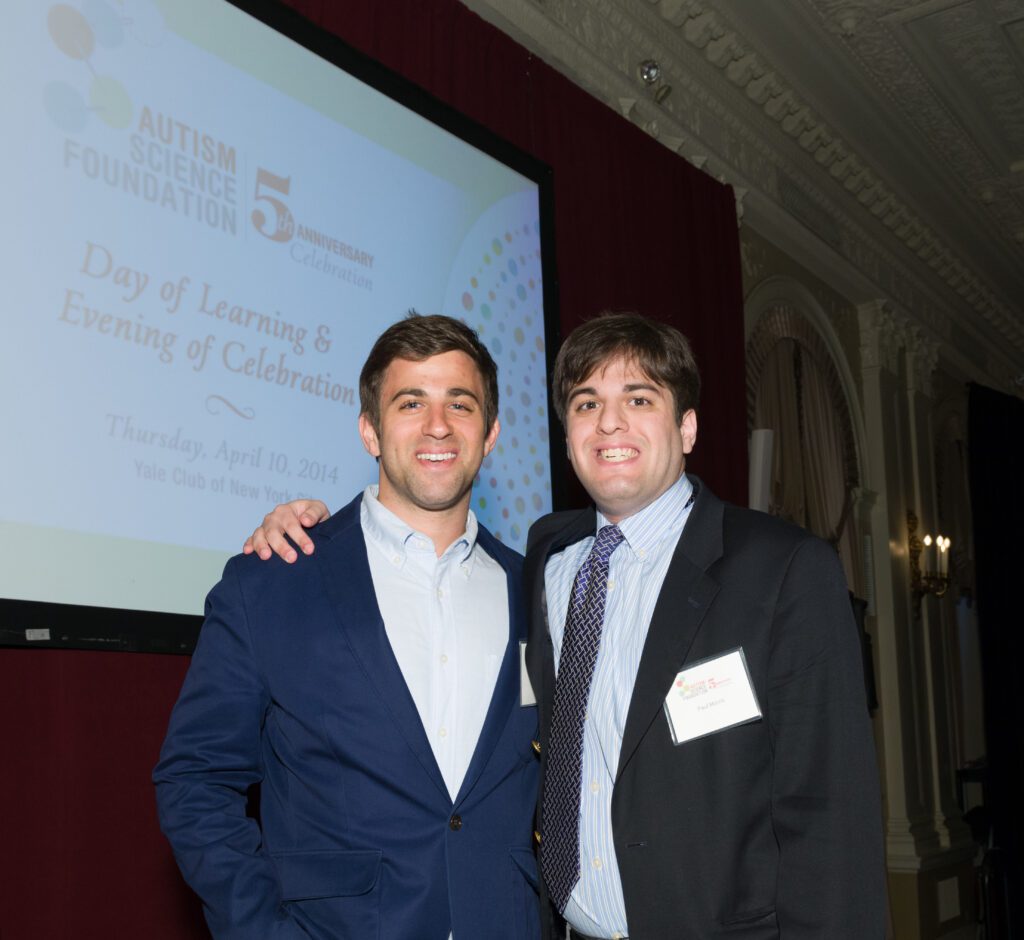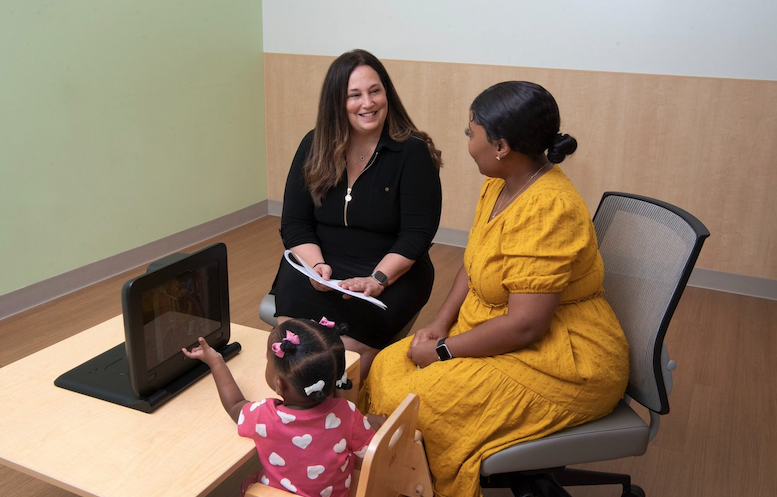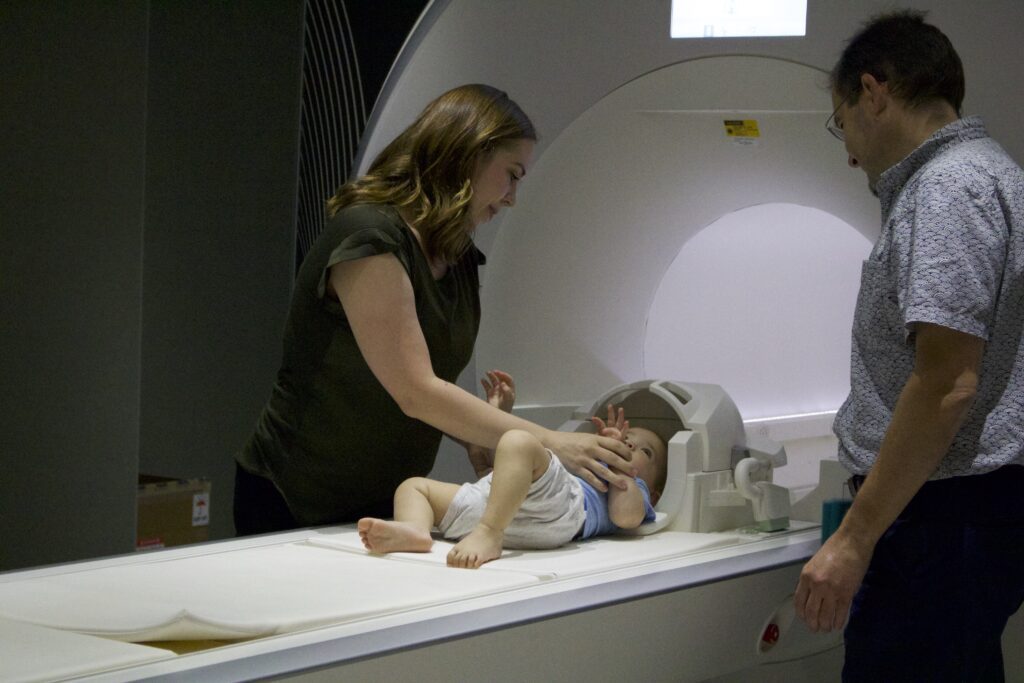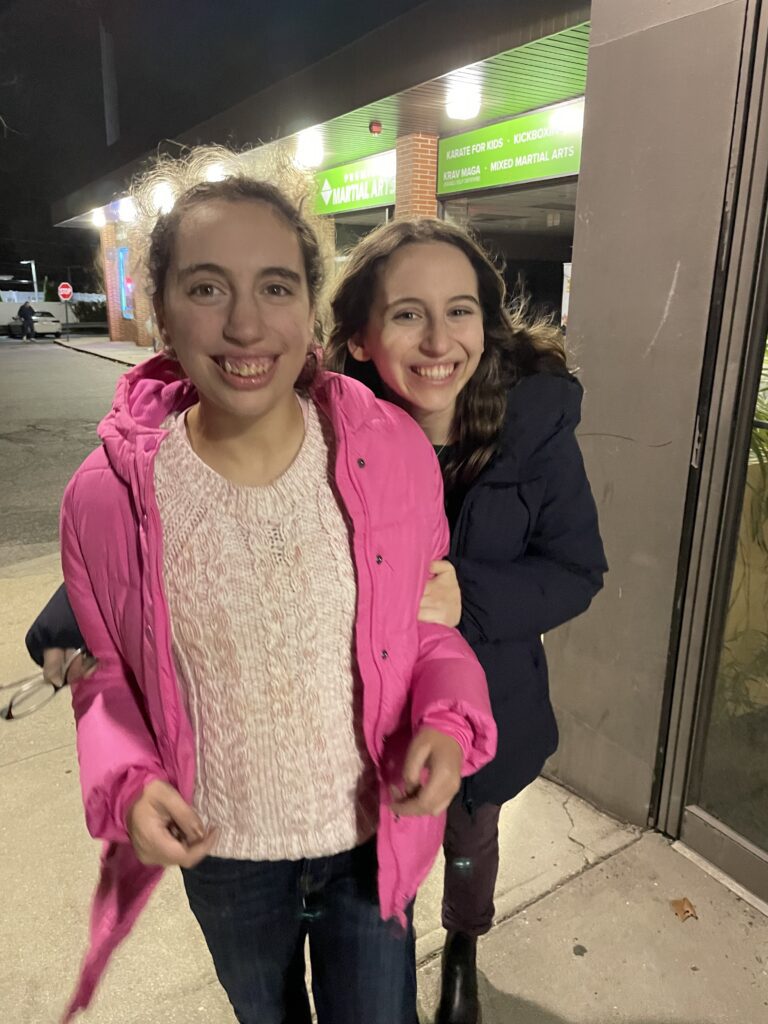2023 Year End Review
2023 was another year of valuable research findings that will improve the lives of individuals on the autism spectrum. Important advances were made in defining autism, measuring who has autism, understanding more about women with autism and identifying genetic mechanisms of resilience. Technology and artificial intelligence (AI) are reducing the time to diagnosis and improving access to early intervention.
What is autism?
This year the community had a lot of conversations on how autism should be defined and diagnosed.
Autism’s heterogeneity complicates issues relating to research, advocacy, services, supports and medical care. Some experience autism as a debilitating disorder, while others consider it an identity. Many fall in the middle. In 2021, the term “profound autism” was introduced to describe autistic individuals who require 24/7 supports, who are minimally verbal or nonspeaking or who have an IQ under 50. This year, there were several papers that examined this new definition and two editorials that attempted to reconcile the different views around the broad autism spectrum.1,2 Greene and Whitehouse suggest that individual brain differences, originating genetically or as the result of genetic/environmental interactions, lead to an autism diagnosis. That is followed by a “transactional” stage, where a child’s experience with the world molds their later behavior and functioning. This view does not contradict the idea of profound autism but hypothesizes the process by which autistic individuals develop symptoms and features. It also explains the vast heterogeneity across the spectrum, why interventions and supports that are “one size fits all” are not useful and why autism is a distinct category rather than a continuation of typical variation.3
Who has autism?
This title was “borrowed” from a 2014 Day of Learning presentation given by Cathy Rice, PhD from the Centers for Disease Control. Even 10 years later, it’s a relevant question.

New prevalence numbers for autism were released by the CDC ADDM Network, which has been tracking autism prevalence for the past 20-plus years. This year the CDC reported that the number of 8-year-old children who were diagnosed with autism increased to one in 36, with variability across gender and geographic location.4 Similar data obtained from 4-year-olds show that early identification of ASD is improving, and while racial and ethnic differences still exist in the cohort of 4-year-old children,5 that disparity is reduced by 8 years of age. But while racial disparities are improving, there are still features that differentiate those from different racial backgrounds. For example, intellectual disability is still diagnosed more often in Black children. Girls are also still significantly less likely to be diagnosed than boys at 4 or 8 years of age – a difference that has been consistently demonstrated and warrants further research.
This year for the first time, the CDC also measured the prevalence of profound autism using the definition published in the Lancet in 2021 (IQ<50, minimally or nonverbal and requiring round-the-clock supports). The CDC reported that 27.8% of those with ASD meet this definition of profound autism.6 Members of this population are rarely included in research studies. In response, ASF has launched a profound autism pilot grant program specifically devoted to studying this underrepresented and understudied population.
The question of “who has autism” is muddled by increased use of social media platforms that circulate inaccurate and misleading information about autism and its features. One study showed that most of the information about autism on TikTok was inaccurate, but that these representations were viewed just as often as were accurate presentations.7 This might explain misunderstandings about autism, what causes it and what can be done to help those with a diagnosis. We will never be able to stop the spread of misinformation on the internet, but families can educate themselves about the science of autism so they know what is true and what is false.
Rage against the machine
This year saw an explosion of new technology and artificial intelligence-assisted devices to help diagnose autism.

These tools, aka “AI” technologies are being developed to better automate an autism diagnosis in the hopes of decreasing the time families spend on waiting for an evaluation.8 Many of these new AI-based projects have been reviewed elsewhere or described in the ASF Weekly Science podcast.9
Two such AI tools designed to improve diagnosis use measures of social attention and visual engagement, measuring how much time someone spends looking at social vs. nonsocial scenes. Researchers and clinicians have observed for years that children with autism tend to look less at faces and more at objects in a visual scene, and this knowledge has now been turned into screening and diagnostic tools. Duke University piloted a system called SenseToKnow, and it has shown promising results in pediatric settings.10Another technology, called EarliPoint, moved beyond the pilot stage and received FDA approval after validation for use in identifying children with autism as early as 16 months of age. Both are noninvasive and require a child to spend only a few minutes looking at different stimuli.11,12 They identify children with autism nearly as well as standard assessments, which can take hours to administer and can be costly.
Telehealth technologies like As You Are and CanvasDx (CanvasDx was FDA approved last year) are taking advantage of technological advancements to use clinician-coded measures of autism behaviors (like social communication abilities, social interaction, restrictive and repetitive behaviors, and caregiver reports of autistic behavior and impairment) to provide accessible diagnostic services. These are more like traditional assessments, but can be done in more naturalistic settings like the home over the internet. They use mathematical calculations to determine probability of a diagnosis from shorter observations.
All of these “machine learning” approaches build on existing science around what is known about the early signs of autism, which behavioral features are most salient and what can be done to minimize burden to the family and eliminate diagnostic bias, as well as provide quality assessment services in countries that have few trained experts. The goal is to reduce the unacceptable waitlists to receive an evaluation. Other machine learning approaches are being studied to identify the best method of intervention,13 sleep14 and probability of a genetic diagnosis.15 Based on the number of published research protocols, there are at least four AI-based research studies in progress to improve understanding and prediction of severe and dangerous behaviors.
These tools were built off the arsenal of scientific discovery in autism that has been established over the past decades. Without many years of eye tracking, brain tissue analysis, genetic discovery and facial expression analysis, developing tools like these would have been impossible.
Where are our girls?
With females four times less likely to receive a diagnosis for various reasons16, there is a lack of knowledge of the needs of females with autism, also called autistic females at birth.

In 2023, the Lancet published a list of suggestions for supporting females on the spectrum, ranging from recognizing “female driven” stereotyped behavior to improving employment opportunities that are traditionally focused on male interests. 17 While it is known that factors like camouflaging autistic features may hide a diagnosis, age tends to play a huge role in the features that are displayed by autistic females vs. autistic males, as well as in how these behaviors are interpreted by clinicians.18 While many non-biological hypotheses have been generated to explain the difference in diagnostic prevalence of females vs. males, there are also neurobiological markers which may explain why certain features of autism are different in females, including different activity in certain brain regions during adolescence.19,20 Scientists have been able to dissect different cells from male and female brains to confirm that female cells have a higher rate of mutations in ASD risk genes compared to males.21 Finally, more research this year points to different patterns of brain development, which may explain behavioral differences in autistic females vs. males at birth.19,20,22 Females and males are typically different, and gender disparities in diagnosis are not unique to autism. However, as females with autism are understudied and often overlooked, clinicians and care providers need more tools to help autistic females receive the support they need.
How does the autism brain work?
Understanding of basic neurological processes in autism leads to clues which influence therapeutics.

Everyone wants to know what the autism brain looks like and how it functions across the lifespan and across genders. By understanding basic neurological processes in the brain, scientists can identify tailored support options and even therapeutics. More studies this year have shown similarities in how areas of the autistic brain connect compared to brains of people with ADHD and bipolar depression. This is additional evidence that autism is part of the bigger spectrum of neurodevelopmental disorders that includes depression, schizophrenia and obsessive-compulsive disorder. It also indicates that, while the autism brain may have a distinct profile, it has many similarities to other conditions and disorders.23
Therapeutic clues are being identified from circuits and molecular markers in the brain. By studying brain tissue, scientists have found that genes controlling how neurons connect and communicate are dampened in autism, while those affecting inflammation are heightened. This finding has been confirmed in other body tissue24 and model systems.25 The changes suggest that initial overexcitation and overconnectivity of cells in the brain lead to inflammation and potential neurodegeneration. These changes may worsen over time, opening up areas of research not just in childhood but through adulthood.26 One of the genes of interest, GABA, turns cells off and is thought of as a “traffic light,” ensuring that not all the lights are green and that traffic flows safely. Brain tissue studies revealed that a decrease in the number of cells that contain GABA (and thus ensure that cells do not become too excited) is linked to two specific features of ASD: stereotypy and intellectual ability.27 The study of brain tissue and the ability to look directly at the brains of people with autism is only made possible by families who have learned more about the benefits of postmortem brain donation through the Autism BrainNet.
Finally, new model systems, called assembloids, are also now being used to identify and understand not just the genes associated with autism, but how they function in cells.28 By using assembloids, sometimes referred to as “brains in a dish,” hundreds of different genes can be systematically altered and the functions of the cells examined to determine what those genes do. Using these systems, researchers found that a gene associated with ASD affected the function of a part of the cell called the endoplasmic reticulum, which resulted in abnormal migration, i.e., brain cells did not go to the right places during development.29
Cha-Cha-Cha-Changes
Families and individuals experience autism across the lifespan, so why should it just be studied at one time point?



Longitudinal studies that track individuals over time are rare but critical in developing our understanding of autism trajectories. Studies this year point to at least three groups of trajectories: kids who start off with fewer signs and continue to have relatively fewer support needs; kids who are more impaired and stay relatively stable; and kids whose symptoms worsen over time. Features at 6 months were able to predict outcome at 5-6 years with some (but not absolute) accuracy.30 While some studies point to three or four trajectory “groups,” others show at least six.31
Longitudinal studies also indicated that people with autism show higher levels of mental health problems across childhood, predicted by IQ and gender, 32 with girls showing higher levels of depression and anxiety. Higher IQ at age 2 predicted lower levels of attention problems.32 From midlife through early old age, physical health worsened (as expected) but autism symptoms improved, with differences seen between those with and without intellectual disability.33 Other “turning points” or critical windows for change seem to happen in childhood and early adolescence,34 reinforcing that change over time is not linear; there are many peaks and valleys along the way, influenced again by intellectual ability. Females seem to be disproportionately affected by medical and psychiatric issues when transitioning from adolescence into adulthood.35 Future studies should integrate core autism features as well as comorbid conditions36 to better understand the abilities, disabilities and trajectories of those with ASD.
Genetics is not always deterministic
New understanding of the types of gene changes, where they occur in the body and how they influence development can influence the type of treatment a person receives.
There has been great debate over the utility of genetic research in ASD, including the roles of different types of gene mutations in functioning and outcome. Even among rare genetic syndromes associated with autism, there is great heterogeneity in features both within a diagnosis,37,38 and across disorders.39 So how deterministic are single gene mutations associated with autism? Recently, Rolland and colleagues demonstrated that some individuals who had rare genetic mutations did not qualify for a diagnosis,40 sparking debate about resilience to genetic mutations. Is it social environment, epigenetic factors, gender or other genes in the background that are conferring protection?
Recent evidence suggests that assortative mating may explain rare genetic variants in children with rare genetic forms of autism.41 The phenotypic similarities of the biological parents have only before been hypothesized for common variation, but this new work suggests a role for rare variation as well. In addition, those with rare genetic mutations and ASD are also more likely to have common variants, each with their own distinct influence on brain development and autism behaviors. This is consistent with a liability threshold model, where family members who may share genetic risk factors do not have a diagnosis, but where the rare genetic and common genetic variants add to a broad continuum of traits. In some of these cases, it can lead to a diagnosis.42 More genetic research will help identify how rare and common gene variants interact, how they lead to an autism diagnosis, what neural mechanisms are involved and whether and how the genes lead to other outcomes besides autism.
Sometimes it’s not all about the autism
Comorbidites of autism often are life-threatening and impair quality of life. There are some solutions.

Comorbid medical and psychiatric issues are a prescient issue in the autism community because individuals with ASD experience a higher burden of these disorders and conditions.43 There is an enduring recognition that comorbidities of autism can be severe, impair daily life and, in the case of catatonia and seizures, even be fatal. Some features associated with these comorbidities can be explained by etiological factors like family history and preterm birth.43 Many genes that are related to autism have multiple functions all over the body, including the GI system, leading to GI distress and dysfunction with an autism diagnosis.44 Identification of these genes has led to potential therapies.45-47 Most comorbidities are present across the lifespan, while some improve over time.48
The unspoken heroes of autism families: siblings!
Siblings have a unique relationship that lasts an entire life. Who knows you better than your sister or brother?

Research shows that nonautistic siblings of people with autism are at higher risk for psychiatric and neurodevelopmental disorders compared to the general population. A thorough review of the literature published this year indicates a decreased quality of life and sense of well-being in non-autistic siblings. This varied by age, sibling relationship and other factors, but was found to be consistent across studies.49 There is not yet enough research to draw any conclusion about psychopathology in siblings, although depression was detected in some small studies.50 A new intervention incorporating cognitive behavioral therapy, positive psychology and stress management showed promise in increasing resilience to adverse events as well as promoting improved coping around stressful events in siblings.51
The presence of a typically developing sibling has a beneficial effect on a multitude of outcomes for their autistic brother or sister, although differences in ages, sibling relationships and presence of challenging behaviors influenced the strength of the findings.52 The IQ of the autistic sibling and the presence of externalizing behaviors significantly influenced conflict between siblings. Instances where the proband had an intellectual disability showed the lowest level of conflict, while instances where the proband was prone to aggression resulted in the highest levels of conflict.53
Final thoughts
After a diagnosis, the first task is to find appropriate services, supports and interventions. But what works in one person does not necessarily work in another.
The goal of autism research is to help individuals with autism and their families lead their best lives. The rise of personalized medicine will improve opportunities to deliver the right treatments to the right person at the right time. Gene-first studies are identifying treatments that are targeted at underlying biological causes in individuals with monogenic forms of autism. Longitudinal studies can identify critical windows for intervention. AI-driven technologies are being developed to improve diagnosis and mitigate symptoms.12 Comprehensive meta-analyses continue to reinforce the benefits of behavioral and developmental interventions for core features of autism. 54 And studies continue to confirm that “earlier is better” when it comes to intervention. For example, a new randomized clinical trial confirmed that 18-to-24-month-old children who received more intensive, individualized forms of intervention showed greater gains in language, social communication and self-help than those who received intervention later.55 Another study showed that those with better baseline adaptive skills had such strong responses to early intervention that their diagnosis was no longer evident by school age, suggesting this may influence response to intervention.56 Research this year also demonstrated that meaningful gains in language can be made in autistic children who are non-speaking through behavioral and naturalistic developmental interventions,57 as well as confirming that early intervention saves costs in the long term.58,59 No single intervention is going to support everyone across the autism spectrum equally, but it is clear that access to early, evidence-based intervention to help children live their best lives possible is imperative for child health and development.
References
1. Green J. Debate: Neurodiversity, autism and healthcare. Child Adolesc Ment Health 2023; 28(3): 438-42.
2. Whitehouse A. Commentary: A spectrum for all? A response to Green et al. (2023), neurodiversity, autism and health care. Child Adolesc Ment Health 2023; 28(3): 443-5.
3. Frazier TW, Chetcuti L, Al-Shaban FA, et al. Categorical versus dimensional structure of autism spectrum disorder: A multi-method investigation. JCPP Adv 2023; 3(2): e12142.
4. Maenner MJ, Warren Z, Williams AR, et al. Prevalence and Characteristics of Autism Spectrum Disorder Among Children Aged 8 Years – Autism and Developmental Disabilities Monitoring Network, 11 Sites, United States, 2020. MMWR Surveill Summ 2023; 72(2): 1-14.
5. Shaw KA, Bilder DA, McArthur D, et al. Early Identification of Autism Spectrum Disorder Among Children Aged 4 Years – Autism and Developmental Disabilities Monitoring Network, 11 Sites, United States, 2020. MMWR Surveill Summ 2023; 72(1): 1-15.
6. Hughes MM, Shaw KA, DiRienzo M, et al. The Prevalence and Characteristics of Children With Profound Autism, 15 Sites, United States, 2000-2016. Public Health Rep 2023; 138(6): 971-80.
7. Aragon-Guevara D, Castle G, Sheridan E, Vivanti G. The Reach and Accuracy of Information on Autism on TikTok. J Autism Dev Disord 2023.
8. Cognoa I. The State of Pediatric Autism Diagnosis in the U.S.:
Gridlocks, Inequities and Missed Opportunities Persist. https://cognoa.com/waitlist-crisis-report/, 2023.
9. Aylward BS, Abbas H, Taraman S, et al. An Introduction to Artificial Intelligence in Developmental and Behavioral Pediatrics. J Dev Behav Pediatr 2023; 44(2): e126-e34.
10. Perochon S, Di Martino JM, Carpenter KLH, et al. Early detection of autism using digital behavioral phenotyping. Nat Med 2023; 29(10): 2489-97.
11. Jones W, Klaiman C, Richardson S, et al. Eye-Tracking-Based Measurement of Social Visual Engagement Compared With Expert Clinical Diagnosis of Autism. JAMA 2023; 330(9): 854-65.
12. Jones W, Klaiman C, Richardson S, et al. Development and Replication of Objective Measurements of Social Visual Engagement to Aid in Early Diagnosis and Assessment of Autism. JAMA Netw Open 2023; 6(9): e2330145.
13. Twala B, Molloy E. On effectively predicting autism spectrum disorder therapy using an ensemble of classifiers. Sci Rep 2023; 13(1): 19957.
14. Eylon G, Tikotzky L, Dinstein I. Performance evaluation of Fitbit Charge 3 and actigraphy vs. polysomnography: Sensitivity, specificity, and reliability across participants and nights. Sleep Health 2023; 9(4): 407-16.
15. Donnelly N, Cunningham A, Salas SM, et al. Identifying the neurodevelopmental and psychiatric signatures of genomic disorders associated with intellectual disability: a machine learning approach. Mol Autism 2023; 14(1): 19.
16. McFayden TC, Putnam O, Grzadzinski R, Harrop C. Sex Differences in the Developmental Trajectories of Autism Spectrum Disorder. Curr Dev Disord Rep 2023; 10(1): 80-91.
17. Lai MC, Amestoy A, Bishop S, et al. Improving autism identification and support for individuals assigned female at birth: clinical suggestions and research priorities. Lancet Child Adolesc Health 2023; 7(12): 897-908.
18. Tsirgiotis JM, Young RL, Weber N. A comparison of the presentations of males and females with autism spectrum disorder and those narrowly below the diagnostic threshold. Autism 2023: 13623613231190682.
19. Neuhaus E, Santhosh M, Kresse A, et al. Frontal EEG alpha asymmetry in youth with autism: Sex differences and social-emotional correlates. Autism Res 2023.
20. St John T, Estes AM, Hazlett HC, et al. Association of Sex With Neurobehavioral Markers of Executive Function in 2-Year-Olds at High and Low Likelihood of Autism. JAMA Netw Open 2023; 6(5): e2311543.
21. Velmeshev D, Perez Y, Yan Z, et al. Single-cell analysis of prenatal and postnatal human cortical development. Science 2023; 382(6667): eadf0834.
22. Gros G, Miranda Marcos R, Latrille A, et al. Whole-brain gray matter maturation trajectories associated with autistic traits from adolescence to early adulthood. Brain Struct Funct 2023.
23. Segal A, Parkes L, Aquino K, et al. Regional, circuit and network heterogeneity of brain abnormalities in psychiatric disorders. Nat Neurosci 2023; 26(9): 1613-29.
24. Dumitriu D, Baldwin E, Coenen RJJ, et al. Deciduous tooth biomarkers reveal atypical fetal inflammatory regulation in autism spectrum disorder. iScience 2023; 26(3): 106247.
25. Weinschutz Mendes H, Neelakantan U, Liu Y, et al. High-throughput functional analysis of autism genes in zebrafish identifies convergence in dopaminergic and neuroimmune pathways. Cell Rep 2023; 42(3): 112243.
26. Zhang P, Omanska A, Ander BP, Gandal MJ, Stamova B, Schumann CM. Neuron-specific transcriptomic signatures indicate neuroinflammation and altered neuronal activity in ASD temporal cortex. Proc Natl Acad Sci U S A 2023; 120(10): e2206758120.
27. Dufour BD, McBride E, Bartley T, Juarez P, Martinez-Cerdeno V. Distinct patterns of GABAergic interneuron pathology in autism are associated with intellectual impairment and stereotypic behaviors. Autism 2023; 27(6): 1730-45.
28. Wang L, Owusu-Hammond C, Sievert D, Gleeson JG. Stem Cell-Based Organoid Models of Neurodevelopmental Disorders. Biol Psychiatry 2023; 93(7): 622-31.
29. Meng X, Yao D, Imaizumi K, et al. Assembloid CRISPR screens reveal impact of disease genes in human neurodevelopment. Nature 2023; 622(7982): 359-66.
30. Franchini M, Smith IM, Sacrey L, et al. Continuity of trajectories of autism symptom severity from infancy to childhood. J Child Psychol Psychiatry 2023; 64(6): 895-906.
31. Fountain C, Winter AS, Cheslack-Postava K, Bearman PS. Developmental Trajectories of Autism. Pediatrics 2023; 152(3).
32. Wright N, Courchesne V, Pickles A, et al. A longitudinal comparison of emotional, behavioral and attention problems in autistic and typically developing children. Psychol Med 2023: 1-13.
33. Hong J, DaWalt LS, Taylor JL, Haider A, Mailick M. Autism through midlife: trajectories of symptoms, behavioral functioning, and health. J Neurodev Disord 2023; 15(1): 36.
34. Chen Y-J, Duku E, Szatmari P, et al. Trajectories of adaptive functioning from early childhood to adolescence in autism: Identifying turning points and key correlates of chronogeneity. JCPP Advances 2023; n/a(n/a): e12212.
35. Malow BA, Qian Y, Ames JL, Alexeeff S, Croen LA. Health conditions in autism: Defining the trajectory from adolescence to early adulthood. Autism Res 2023; 16(7): 1437-49.
36. Waizbard-Bartov E, Fein D, Lord C, Amaral DG. Autism severity and its relationship to disability. Autism Res 2023; 16(4): 685-96.
37. Bozhilova N, Welham A, Adams D, et al. Profiles of autism characteristics in thirteen genetic syndromes: a machine learning approach. Mol Autism 2023; 14(1): 3.
38. Jenner L, Richards C, Howard R, Moss J. Heterogeneity of Autism Characteristics in Genetic Syndromes: Key Considerations for Assessment and Support. Curr Dev Disord Rep 2023; 10(2): 132-46.
39. Peall KJ, Owen MJ, Hall J. Rare genetic brain disorders with overlapping neurological and psychiatric phenotypes. Nature Reviews Neurology 2023.
40. Rolland T, Cliquet F, Anney RJL, et al. Phenotypic effects of genetic variants associated with autism. Nat Med 2023; 29(7): 1671-80.
41. Smolen C, Jensen M, Dyer L, et al. Assortative mating and parental genetic relatedness contribute to the pathogenicity of variably expressive variants. The American Journal of Human Genetics 2023; 110(12): 2015-28.
42. Cirnigliaro M, Chang TS, Arteaga SA, et al. The contributions of rare inherited and polygenic risk to ASD in multiplex families. Proc Natl Acad Sci U S A 2023; 120(31): e2215632120.
43. Khachadourian V, Mahjani B, Sandin S, et al. Comorbidities in autism spectrum disorder and their etiologies. Transl Psychiatry 2023; 13(1): 71.
44. Davidson EA, Holingue C, Jimenez-Gomez A, Dallman JE, Moshiree B. Gastrointestinal Dysfunction in Genetically Defined Neurodevelopmental Disorders. Semin Neurol 2023; 43(4): 645-60.
45. Kim HK, Goncalves VF, Husain MI, et al. Cross-disorder GWAS meta-analysis of endocannabinoid DNA variations in major depressive disorder, bipolar disorder, attention deficit hyperactivity disorder, autism spectrum disorder, and schizophrenia. Psychiatry Res 2023; 330: 115563.
46. Lai MC. Mental health challenges faced by autistic people. Nat Hum Behav 2023; 7(10): 1620-37.
47. Curatolo P, Scheper M, Emberti Gialloreti L, Specchio N, Aronica E. Is tuberous sclerosis complex-associated autism a preventable and treatable disorder? World J Pediatr 2023.
48. Micai M, Fatta LM, Gila L, et al. Prevalence of co-occurring conditions in children and adults with autism spectrum disorder: A systematic review and meta-analysis. Neurosci Biobehav Rev 2023; 155: 105436.
49. Quatrosi G, Genovese D, Amodio E, Tripi G. The Quality of Life among Siblings of Autistic Individuals: A Scoping Review. J Clin Med 2023; 12(3).
50. Bispo-Torres AC, Lucena R, Tavares-Rodrigues IC, et al. Psychopathological symptoms in parents and siblings of people on the autism spectrum: A systematic review and meta-analysis. Psychiatry Res2023; 323: 115145.
51. Kuhlthau KA, Traeger L, Luberto CM, et al. Resiliency Intervention for Siblings of Children With Autism Spectrum Disorder: A Randomized Pilot Trial. Acad Pediatr 2023; 23(6): 1187-95.
52. Cuskelly M, Gilmore L, Rayner C, Girkin F, Mulvihill A, Slaughter V. The impacts of typically developing siblings on the developmental outcomes of children with disability: A scoping review. Res Dev Disabil 2023; 140: 104574.
53. Rixon L, Hastings RP, Kovshoff H, Bailey T. Short Report: Outcomes for siblings associated with sub-groups of autistic children with intellectual disability identified by latent profile analysis. Res Dev Disabil2022; 130: 104337.
54. Sandbank M, Bottema-Beutel K, Crowley LaPoint S, et al. Autism intervention meta-analysis of early childhood studies (Project AIM): updated systematic review and secondary analysis. BMJ 2023; 383: e076733.
55. Guthrie W, Wetherby AM, Woods J, et al. The earlier the better: An RCT of treatment timing effects for toddlers on the autism spectrum. Autism 2023; 27(8): 13623613231159153.
56. Harstad E, Hanson E, Brewster SJ, et al. Persistence of Autism Spectrum Disorder From Early Childhood Through School Age. JAMA Pediatr 2023; 177(11): 1197-205.
57. Kasari C, Shire S, Shih W, Landa R, Levato L, Smith T. Spoken language outcomes in limited language preschoolers with autism and global developmental delay: RCT of early intervention approaches. Autism Res 2023; 16(6): 1236-46.
58. Tinelli M, Roddy A, Knapp M, et al. Economic analysis of early intervention for autistic children: findings from four case studies in England, Ireland, Italy, and Spain. Eur Psychiatry 2023; 66(1): e76.
59. Segal L, Green J, Twizeyemariya A, et al. Estimated Therapy Costs and Downstream Cost Consequences of iBASIS-Video Interaction to Promote Positive Parenting Intervention vs Usual Care Among Children Displaying Early Behavioral Signs of Autism in Australia. JAMA Netw Open 2023; 6(4): e235847.

